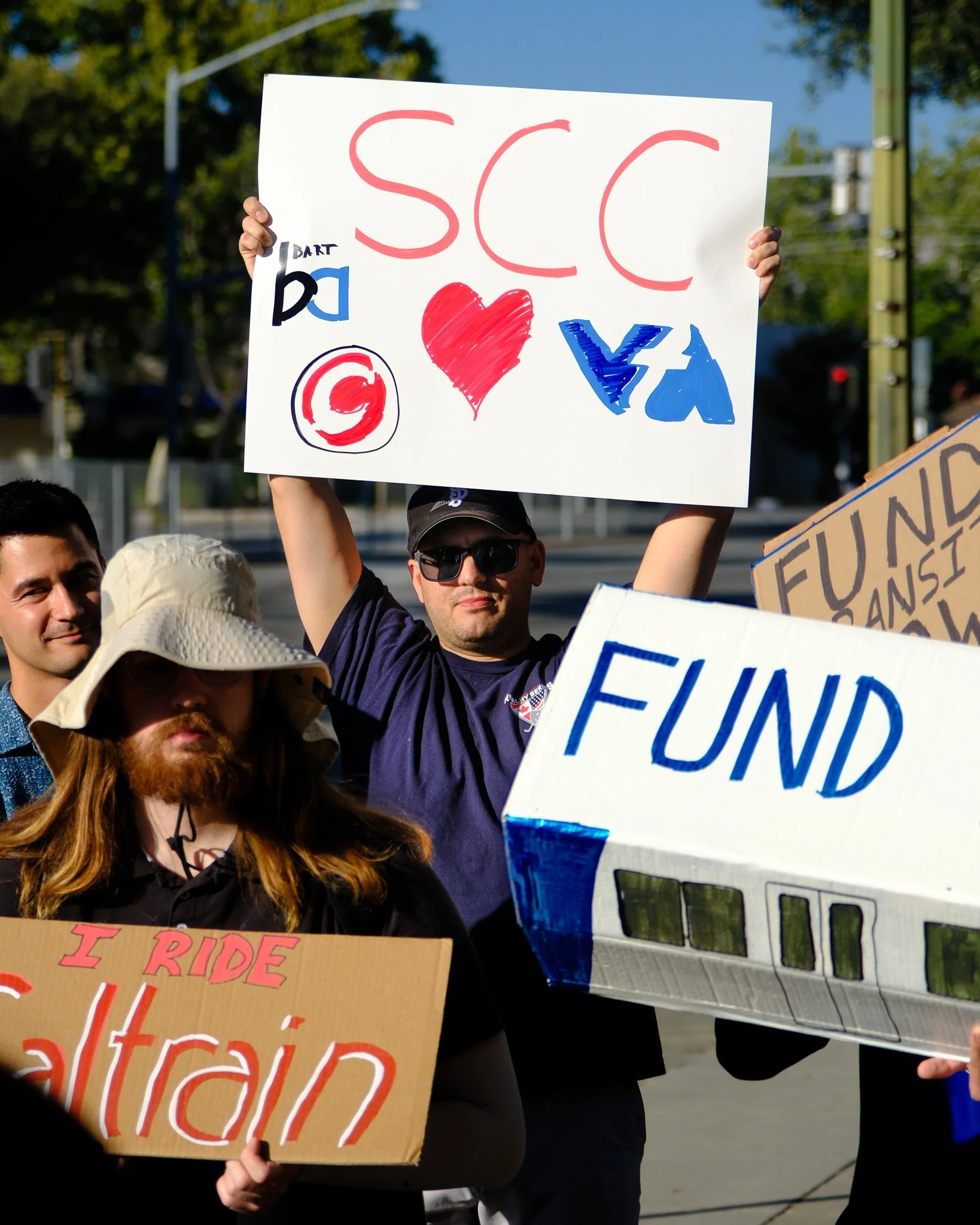San Mateo and Santa Clara Counties vote to join regional transit funding measure
In the first week of August, San Mateo and Santa Clara Counties voted to participate in the regional transit funding measure, joining San Francisco and the East Bay. The VTA Board voted unanimously to opt into the regional transit funding measure being authorized by SB63 on Thursday, August 8, following SamTrans Board’s 8-1 decision on Wednesday, August 7.
If the bill is finalized in the legislature and the ballot measure passed in November 2026, the regional transit funding measure would prevent deep service cuts to major transit services at BART, Caltrain, Muni and AC Transit, and would provide funding for coordinated, affordable service, including free transfers, standard low-income discounts, unified navigation, and faster, more reliable bus service. The draft expenditure plan is posted here.
The regional measure on its own won’t be enough to Muni running given their $300+ million budget deficit; San Francisco is also planning a second ballot measure for 2026.
The share of regional measure funds going to transit operators to prevent service cuts.
Importantly for San Mateo and Santa Clara Counties, funding over and above those requirements would go to the county for local transit needs. “Return to source” was a top negotiating priority for these counties’ decision to join, and will provide $50M in San Mateo County and $264M in Santa Clara County. There will be local processes for the expenditure plans for the “return to source funding.” In Santa Clara County in particular, the funding will enable VTA to make progress on its “Visionary Network” to greatly improve sub-par service, and to fund transit priority projects that make buses faster and more reliable.
The opt-in counties are a linchpin for the regional measure, to maintain service in the multi-county systems that face potential severe cuts, and to fund the highly popular and ridership-increasing coordination initiatives around the region. A three-county measure would still leave BART and Caltrain with deep budget holds and service cuts, creating a credibility program for a campaign.
While Santa Clara County isn’t funding BART directly from the regional measure, the funding backstops the County’s BART operations. Santa Clara County has a contract requiring it to fund BART operations with a lien against its operating funding for local transit. If Santa Clara County doesn’t participate, the tragic and unpopular outcome would be raiding local service to fund BART.
Without a regional measure supporting Caltrain, that agency could try a separate measure to maintain service, imposing yet a third measure in San Francisco.
Flexible "return to source” funding going to each county.
The bill would authorize a .5 cent sales tax for 14 years, and would enable a citizens’ initiative which requires 50%+1 to win. Both counties’ decisions were strongly influenced by polling which, in both counties and over all, comes in above the 50% threshold and below the two thirds majority needed if a government agency were to put a measure on the ballot.
The bill will also include measures for oversight and accountability. The bill authors propose an oversight committee within MTC, composed of two Commissioners per participating County, holding agencies receiving funds accountable to standards for service, fares and cleanliness. The oversight committee will also adjudicate issues relating to adherence to standards, with the ability to withhold up to 5% of funds in case of noncompliance.
And the bill includes efficiency review for agencies receiving more than $50M. According to this provision, MTC will contract with a third party to review opportunities for cost-savings and efficiencies. The review will distinguish between recommended actions that would not impact service and those that would require service realignments or reductions. Each operator board is required to adopt an implementation plan, and operators may reject recommendations if the operator makes a written finding that the recommendation has an unacceptable impact on transit service or safety.
There are ongoing negotiations on details of the expenditure plan and accountability measures. Some leaders in San Mateo County have been seeking a provision where that county can unilaterally withdraw its funding. Other counties participating in the measure have opposed this in writing; a motion recommending but not requiring a version of this approach failed at the SamTrans board by 3:6.
Additional details are expected to be amended into the bill by August 29 when the Assembly Appropriations Committee votes on the “suspense file”, an opaque part of the California legislative process with votes reflecting behind the scenes consensus of legislative leadership. The bill is also expected to have a final review in the Assembly Transportation Committee in the first week of September. Both counties reserve the power to change their minds if there are major changes to the bill
These decisions followed months of negotiations on the provisions and months of advocacy by transit supporters encouraging the “opt-in” counties to join.




